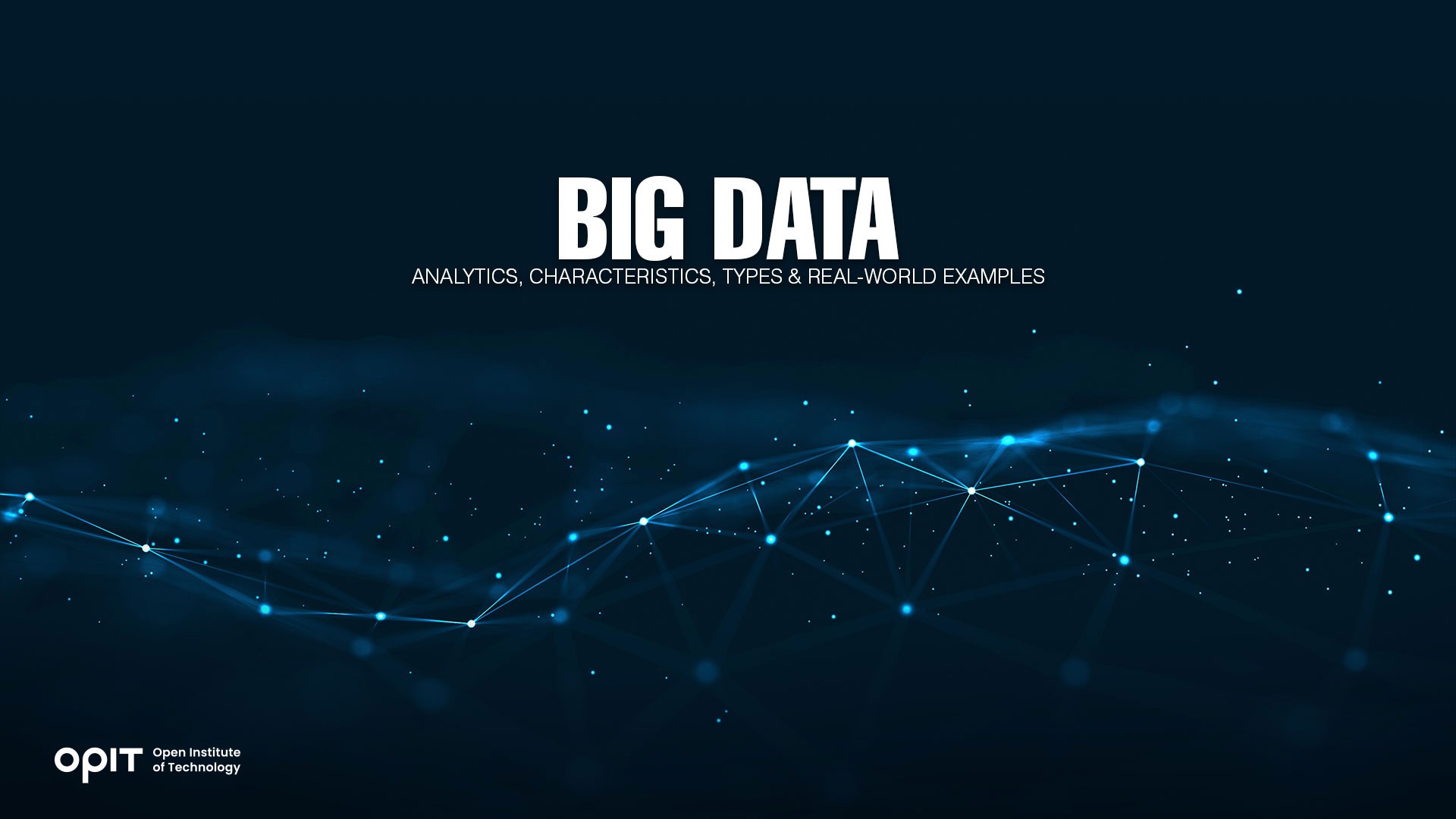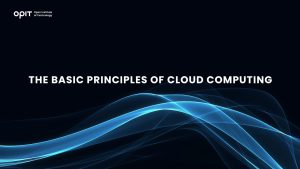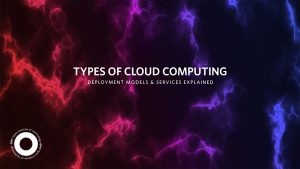Big Data Analytics: A Comprehensive Guide to Characteristics, Types, & Real-World Trends


The term “big data” is self-explanatory: it’s a large collection of data. However, to be classified as “big,” data needs to meet specific criteria. Big data is huge in volume, gets even bigger over time, arrives with ever-higher velocity, and is so complex that no traditional tools can handle it.
Big data analytics is the (complex) process of analyzing these huge chunks of data to discover different information. The process is especially important for small companies that use the uncovered information to design marketing strategies, conduct market research, and follow the latest industry trends.
In this introduction to big data analytics, we’ll dig deep into big data and uncover ways to analyze it. We’ll also explore its (relatively short) history and evolution and present its advantages and drawbacks.
History and Evolution of Big Data
We’ll start this introduction to big data with a short history lesson. After all, we can’t fully answer the “what is big data?” question if we don’t know its origins.
Let’s turn on our time machine and go back to the 1960s. That’s when the first major change that marked the beginning of the big data era took place. The advanced development of data centers, databases, and innovative processing methods facilitated the rise of big data.
Relational databases (storing and offering access to interconnected data points) have become increasingly popular. While people had ways to store data much earlier, experts consider that this decade set the foundations for the development of big data.
The next major milestone was the emergence of the internet and the exponential growth of data. This incredible invention made handling and analyzing large chunks of information possible. As the internet developed, big data technologies and tools became more advanced.
This leads us to the final destination of short time travel: the development of big data analytics, i.e., processes that allow us to “digest” big data. Since we’re witnessing exceptional technological developments, the big data journey is yet to continue. We can only expect the industry to advance further and offer more options.
Big Data Technologies and Tools
What tools and technologies are used to decipher big data and offer value?
Data Storage and Management
Data storage and management tools are like virtual warehouses where you can pack up your big data safely and work with it as needed. These tools feature a powerful infrastructure that lets you access and fetch the desired information quickly and easily.
Data Processing and Analytics Framework
Processing and analyzing huge amounts of data are no walk in the park. But they can be, thanks to specific tools and technologies. These valuable allies can clean and transform large piles of information into data you can use to pursue your goals.
Machine Learning and Artificial Intelligence Platforms
Machine learning and artificial intelligence platforms “eat” big data and perform a wide array of functions based on the discoveries. These technologies can come in handy with testing hypotheses and making important decisions. Best of all, they require minimal human input; you can relax while AI works its magic.
Data Visualization Tools
Making sense of large amounts of data and presenting it to investors, stakeholders, and team members can feel like a nightmare. Fortunately, you can turn this nightmare into a dream come true with big data visualization tools. Thanks to the tools, creating stunning graphs, dashboards, charts, and tables and impressing your coworkers and superiors has never been easier.
Big Data Analytics Techniques and Methods
What techniques and methods are used in big data analytics? Let’s find the answer.
Descriptive Analytics
Descriptive analytics is like a magic wand that turns raw data into something people can read and understand. Whether you want to generate reports, present data on a company’s revenue, or analyze social media metrics, descriptive analytics is the way to go.
It’s mostly used for:
- Data summarization and aggregation
- Data visualization
Diagnostic Analytics
Have a problem and want to get detailed insight into it? Diagnostic analytics can help. It identifies the root of an issue, helping you figure out your next move.
Some methods used in diagnostic analytics are:
- Data mining
- Root cause analysis
Predictive Analytics
Predictive analytics is like a psychic that looks into the future to predict different trends.
Predictive analytics often uses:
- Regression analysis
- Time series analysis
Prescriptive Analytics
Prescriptive analytics is an almighty problem-solver. It usually joins forces with descriptive and predictive analytics to offer an ideal solution to a particular problem.
Some methods prescriptive analytics uses are:
- Optimization techniques
- Simulation and modeling
Applications of Big Data Analytics
Big data analytics has found its home in many industries. It’s like the not-so-secret ingredient that can make the most of any niche and lead to desired results.
Business and Finance
How do business and finance benefit from big data analytics? These industries can flourish through better decision-making, investment planning, fraud detection and prevention, and customer segmentation and targeting.
Healthcare
Healthcare is another industry that benefits from big data analytics. In healthcare, big data is used to create patient databases, personal treatment plans, and electronic health records. This data also serves as an excellent foundation for accurate statistics about treatments, diseases, patient backgrounds, risk factors, etc.
Government and Public Sector
Big data analytics has an important role in government and the public sector. Analyzing different data improves efficiency in terms of costs, innovation, crime prediction and prevention, and workforce. Multiple government parts often need to work together to get the best results.
As technology advances, big data analytics has found another major use in the government and public sector: smart cities and infrastructure. With precise and thorough analysis, it’s possible to bring innovation and progress and implement the latest features and digital solutions.
Sports and Entertainment
Sports and entertainment are all about analyzing the past to predict the future and improve performance. Whether it’s analyzing players to create winning strategies or attracting the audience and freshening up the content, big data analytics is like a valuable player everyone wants on their team.
Challenges and Ethical Considerations in Big Data Analytics
Big data analytics represent doors to new worlds of information. But opening these doors often comes with certain challenges and ethical considerations.
Data Privacy and Security
One of the major challenges (and the reason some people aren’t fans of big data analytics) is data privacy and security. The mere fact that personal information can be used in big data analytics can make individuals feel exploited. Since data breaches and identity thefts are, unfortunately, becoming more common, it’s no surprise some people feel this way.
Fortunately, laws like GDPR and CCPA give individuals more control over the information others can collect from them.
Data Quality and Accuracy
Big data analytics can sometimes be a dead end. If the material wasn’t handled correctly, or the data was incomplete to start with, the results themselves won’t be adequate.
Algorithmic Bias and Fairness
Big data analytics is based on algorithms, which are designed by humans. Hence, it’s not unusual to assume that these algorithms can be biased (or unfair) due to human prejudices.
Ethical Use of Big Data Analytics
The ethical use of big data analytics concerns the “right” and “wrong” in terms of data usage. Can big data’s potential be exploited to the fullest without affecting people’s right to privacy?
Future Trends and Opportunities in Big Data Analytics
Although it has proven useful in many industries, big data analytics is still relatively young and unexplored.
Integration of Big Data Analytics With Emerging Technologies
It seems that new technologies appear in the blink of an eye. Our reality today (in a technological sense) looks much different than just two or three years ago. Big data analytics is now intertwined with emerging technologies that give it extra power, accuracy, and quality.
Cloud computing, advanced databases, the Internet of Things (IoT), and blockchain are only some of the technologies that shape big data analytics and turn it into a powerful giant.
Advancements in Machine Learning and Artificial Intelligence
Machines may not replace us (at least not yet), but it’s impossible to deny their potential in many industries, including big data analytics. Machine learning and artificial intelligence allow for analyzing huge amounts of data in a short timeframe.
Machines can “learn” from their own experience and use this knowledge to make more accurate predictions. They can pinpoint unique patterns in piles of information and estimate what will happen next.
New Applications and Industries Adopting Big Data Analytics
One of the best characteristics of big data analytics is its versatility and flexibility. Accordingly, many industries use big data analytics to improve their processes and achieve goals using reliable information.
Every day, big data analytics finds “new homes” in different branches and niches. From entertainment and medicine to gambling and architecture, it’s impossible to ignore the importance of big data and the insights it can offer.
These days, we recognize the rise of big data analytics in education (personalized learning) and agriculture (environmental monitoring).
Workforce Development and Education in Big Data Analytics
Analyzing big data is impossible without the workforce capable of “translating” the results and adopting emerging technologies. As big data analytics continues to develop, it’s vital not to forget about the cog in the wheel that holds everything together: trained personnel. As technology evolves, specialists need to continue their education (through training and certification programs) to stay current and reap the many benefits of big data analytics.
Turn Data to Your Advantage
Whatever industry you’re in, you probably have goals you want to achieve. Naturally, you want to achieve them as soon as possible and enjoy the best results. Instead of spending hours and hours going through piles of information, you can use big data analytics as a shortcut. Different types of big data technologies can help you improve efficiency, analyze risks, create targeted promotions, attract an audience, and, ultimately, increase revenue.
While big data offers many benefits, it’s also important to be aware of the potential risks, including privacy concerns and data quality.
Since the industry is changing (faster than many anticipated), you should stay informed and engaged if you want to enjoy its advantages.
Have questions?
Visit our FAQ page or get in touch with us!
Write us at +39 335 576 0263
Get in touch at hello@opit.com
Talk to one of our Study Advisors
We are international
We can speak in:




